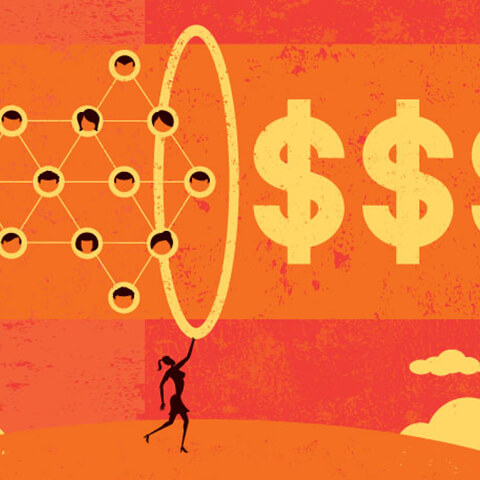Alot of organizations understand t hat online communities are important for engaging customers, members, and attendees, and maintaining a strong brand, but often it can be difficult to translate virtual engagement into measurable ROI. Or, as Vanessa DiMauro, CEO of Leader Networks, puts it: “Good things are happening, but they don’t know how to talk about it.”
 That’s exactly why DiMauro surveyed around 300 senior-level professionals working in marketing and online-community building, whose organizations have online communities ranging in size from less than 100 people to more than 50,000. DiMauro was surprised that a lot of respondents didn’t know what they were spend-ing on their community, or what they were saving. “They need to be thought of as a line of business and not just a platform,” she told Convene, “because they’re bigger than that.”
That’s exactly why DiMauro surveyed around 300 senior-level professionals working in marketing and online-community building, whose organizations have online communities ranging in size from less than 100 people to more than 50,000. DiMauro was surprised that a lot of respondents didn’t know what they were spend-ing on their community, or what they were saving. “They need to be thought of as a line of business and not just a platform,” she told Convene, “because they’re bigger than that.”
The resulting report, The Business Impact of Online Communities — sponsored by Higher Logic and the Society for New Communications Research — makes a strong case for, yes, the business impact of online communities. Fifty-five percent of communities five years or older reported generating or influencing more than $1 million in revenue annually. Convene sat down with DiMauro to discuss her report’s findings and how they can be applied to online meetings.
What made you want to conduct this survey?
For the past 25 years, I’ve been a researcher on online communities. Years ago, I used to run an online community for a big consulting company, and it was a huge success by all accounts, but I knew to avoid the firm’s CFO. He knew that the community didn’t have a lot of the answers to a lot of the financial burdens that were placed on the company. A lot has changed in our profession since then. Now communities are integral to business, but we still don’t have the data or really the ability to report on the business impact, because no one was asking the right questions. So that’s why we did this study, so that community and marketing executives can look their CFOs straight in the eye and have answers to their questions.
What kinds of measurements, metrics, and key performance indicators did you look at to gauge the impact of an online community?
We have seven categories that range from very tactical, like community vibrancy — “Is the community grow-ing?” “Do people spend time on the site?” — straight through to engagement metrics, to content consumption, retention, marketing, and business impact; business impact being the most strategic. We could argue they’re all business-impact metrics in some form, but, for instance, customer retention — that’s not to say, “Did the community retain the member?,” but “How did the community have a meaningful impact on the satisfaction or retention of the firm’s customer base?” Because we know that there’s a correlation between customers who use branded customer communities and a likelihood of them continuing their subscriptions or being an active customer. Now we have example metrics to help them track that more effectively.
How do online communities affect business goals?
We found that customer retention and customer intimacy were the top two ways that companies define competitive advantage. What was most interesting is when we started to probe into the community metrics, they had the fewest in the tracking of those two areas. So while we know that communities are meaningful in that way — and they said so in the study — they didn’t know how to track it. The hypothesis is: If we can get better at the metrics, we can get better at connecting the communities to the things that matter to the organization.
Are online communities using metrics that resonate with business stakeholders?
There’s huge disconnect. The community managers and oftentimes market-ing people, they don’t know how to report meaningful impact of the communities. They’re filling up dashboards and reporting on not-so-meaningful stuff, because that’s all they got. Mean-while, they’re asking for more budget, more resources, and successful communities are growing, but that conversation with that line of business and with finance and the budgetary cycles is fundamentally broken.
How can you apply these findings to online meetings?
Every event planner out there should meet with the community-development and marketing folks and get integrated into the process. You can leverage the communities in amazing ways before the event — everything from making sure members have content and information in advance, to sourcing speakers and engaging your community to create more relevant content for them. Get the most out of the community. You can provide downloadable assets, charge non-attendees to access some of the content, things of that nature.

